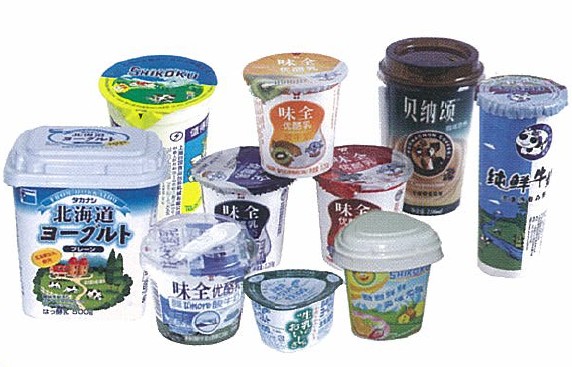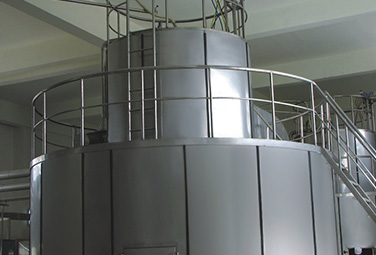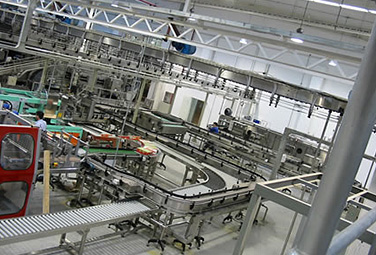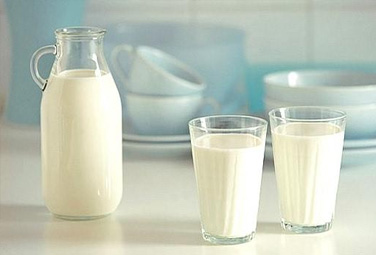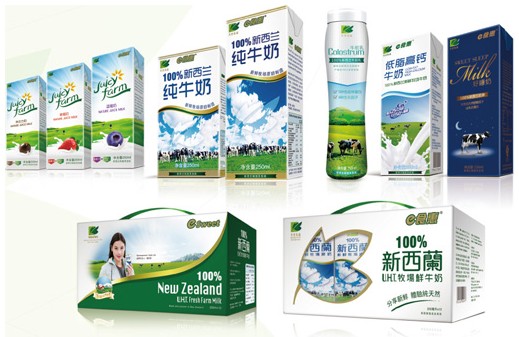Yogurt is a kind of milk product that takes fresh milk as raw material, pasteurizes, adds beneficial bacteria (Fermentation starter) to milk, ferments, and then cools and fills. At present, yogurt products in the market are mostly in the form of solidification, stirring, and fruity flavors with various additives such as fruit juice and jam. Yogurt not only retains all the advantages of milk, but in some aspects, it has been processed to leverage its strengths and avoid its weaknesses, becoming a more suitable nutritional and health product for humans.
Production method
Yogurt is a pure green food made by fermenting milk with lactic acid bacteria. In addition to having the nutritional &#118alue of fresh milk, it contains lactic acid bacteria and produces lactic acid and B vitamins (B2, B6, B12) during the fermentation process. It can promote digestion and respiration in the human body, improve immunity, and ensure the demand for calcium after long-term consumption. It can also promote gastrointestinal health, regulate human metabolism, improve disease resistance, and promote health and longevity for children Elderly people are particularly good. Therefore, it has been favored by more and more people. The following is an introduction to the production method of bottled yogurt:
1、 Instruments and materials used for making yogurt
Sterilization equipment, fermentation tank or fermentation room, heating tank, ultraviolet lamp, glass bottle or porcelain bottle or special paper basin, fresh milk, white sugar, lactic acid bacteria (Bulgaria bacillus and Streptococcus thermophilus), etc.
2、 Production steps
1. Disinfection and sterilization of glass bottles and other materials. The glass bottle is sterilized in a sterilizer for half an hour. If sterilized in a steamer, it takes 45 minutes. In the inoculation room, it takes 50 minutes for ultraviolet sterilization. The inoculation tool is sterilized in a high-pressure steam sterilizer for 30 minutes.
2. Milk sterilization. Put fresh milk into a heating jar and add 10-12% white sugar. Sterilize at 85-90 ℃ for 30 minutes or use other methods for sterilization. No matter which method is used, it is better not to damage the original nutritional components of milk, and it should be cooled after sterilization. It is best to remove the upper layer of fat before or during sterilization to defat the milk.
3. Inoculation. Divide sterilized milk with a temperature below 43 ℃ into sterilized glass bottles, inoculate the milk at a rate of 2-4% in the inoculation room and stir evenly. Pay attention to filling the cans without leaving any gaps, and immediately seal them after connection to ensure anaerobic conditions for lactic acid fermentation. Then it is sent to a refrigerated room at 0-5 ℃ for refrigeration and cooked for 8-10 hours before it can be put on sale. After ripening, yogurt has a special aromatic odor due to its ester content. The function of refrigeration can prevent an increase in acidity and contamination by miscellaneous bacteria on the one hand, and on the other hand, it can make the texture strong, recover whey, and greatly improve the stability of yogurt quality. During the whole process, attention should be paid to Aseptic technique. The staff should wear aseptic work clothes, aseptic gloves, masks, and clean hands. Inoculation without masks is not allowed to prevent contamination by miscellaneous bacteria.
4. Quality standards. High quality yogurt has a milky white or slightly yellow appearance, a smooth surface, firm curd, delicate tissue, uniform texture, allowing a small amount of whey to precipitate, without bubbles, moderate acidity and sweetness, and no spicy or other odors. If there are bubbles in the yogurt or if the bottle cap is bulging, or if there is a spicy or other odor, it indicates that the fresh milk has been contaminated by miscellaneous bacteria during the fermentation process and cannot be consumed. In case of any of the above situations, the production seed (Fermentation starter) must not be used for production to prevent unnecessary losses. If the temperature exceeds the limit, there is little milk coagulation, whey separation, or even no milk coagulation, and a large amount of suspended solids and odor appear, it indicates that the bacterial strain has seriously declined or has been contaminated by miscellaneous bacteria, and should be stopped from use. If the bacterial strain declines, it can be cultured on an inclined culture medium for purification and rejuvenation, and then propagated to obtain excellent production strains.
If homemade, a room temperature above 30 ℃ in summer is sufficient. However, the coagulation time is longer, and the higher the room temperature, the shorter the coagulation time. The method is to clean the rough mouthed glass bottle or porcelain bottle (the can head bottle cannot be used due to its large mouth, which is prone to bacterial contamination), fill it with milk, cover the bottle mouth with a clean double-layer plastic film, and tie it with a loose string, as a lot of steam will be generated inside the bottle during the heating process. If the binding is too tight, the film will burst and easily cause pollution. Put the glass bottle containing milk into the pot and boil for 30 minutes. It is advisable to immerse the milk surface in water, without covering the pot lid. Then, take it out and cool it until the back of your hand touches it without getting too hot, and pour 2% -4% of the fresh pure yogurt sold in the market, such as Jiabao brand pure yogurt and Qinnong brand pure yogurt. After adding the purchased yogurt, immediately tie the plastic film tightly to ensure an oxygen free environment inside the bottle. After 10 hours at room temperature, fresh milk congeals like bean curd jelly served with sauce, and yogurt is ready. Place the yogurt bottle in a refrigerator at 0-5 ℃ and refrigerate for 2-4 hours before consumption. White sugar can be added during sterilization or during consumption, depending on personal taste or not. It can be used as a small bottle alone. If the milk coagulates well, it can be reserved as a strain, but it cannot be used for many times. Since Aseptic technique cannot be guaranteed at home, the strain can be put into the cold room. If there is a bulge on the bottle cap film and gas is generated inside, it indicates that it has entered the gas producing bacteria and is only edible and cannot be kept as a bacterial strain.
Production process
Yogurt is a dairy product made from fresh whole milk and fermented by lactic acid bacteria.
1. Fresh milk must be made from fresh milk that does not contain antibiotics, preservatives, fat content not less than 3%, non fat dry matter greater than 8.5%, and acidity less than 0.16%.
The amount of sugar added is generally controlled between 5% and 10%.
3. Sterilize and add the weighed fresh milk in proportion to top grade sugar, boil for 3 minutes, and filter.
4. Cooling and Inoculation: Quickly cool the boiled and filtered milk to 38-42 ℃ before adding lactic acid bacteria.
5. Fermentation, cooling, and finished product sampling inspection. After adding lactic acid bacteria to the fresh milk bottle, it should be sealed in a timely manner and fermented at a constant temperature of 36-38 ℃ for 4-6 hours. During the later stage of fermentation, samples should be taken to check the acidity and solidification of the semi-finished products at any time, with an acidity of 0.58 being the optimal. After checking and confirming that the acidity and solidification meet the requirements, fermentation can be stopped. Carefully remove it and let it cool naturally indoors to room temperature, then transfer it to a 2-6 ℃ refrigerator for cooling. This can prevent excessive fermentation and help solidify the yogurt.
Finally, sample for finished product inspection.
What are the differences between yogurt, lactic acid drinks, and lactic acid bacteria products
In order to increase the shelf life of lactic acid drinks, preservatives are mostly added, and their nutritional &#118alue is far inferior to yogurt. A typical yogurt ingredient places milk first, while a lactic acid beverage places water first. At present, there are very few 100% pure yogurt in the market. Some merchants consider the taste issue and add a little sugar. Adding sugar to yogurt is considered seasoned yogurt, and the protein content is discounted.
1. Yogurt: It is made by adding acid (such as citric acid) or fermented lactobacilli to fresh milk after sterilization and disinfection, and generally does not contain active lactobacilli. Yogurt is prone to spoilage and should be cooked and consumed immediately.
2. Lactic acid beverage: it is a prepared beverage, which does not require fermentation, but only needs to mix various ingredients evenly and add acidizing agent to make Emulsion. Lactic acid drinks do not contain any lactic acid bacteria and have a shelf life of up to 6 months.
3. Lactic acid bacteria foods or beverages belong to fermented products, such as yogurt and certain yogurt. The raw materials are inoculated with beneficial bacteria, and after a period of fermentation, a portion of the sugar in the raw materials is broken down to produce some other nutrients.

